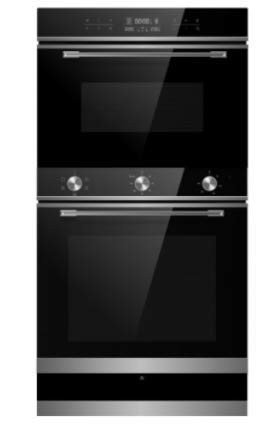What Is The Heck What Is Oven Hobs?

The Essential Guide to Oven Hobs: Selecting the Right One for Your Kitchen
When it pertains to home cooking, couple of appliances are as crucial as the oven hob. This versatile piece of devices is vital for a variety of cooking techniques-- boiling, frying, simmering, and sautéing. Provided the myriad of alternatives readily available on the market, choosing the perfect oven hob for one's kitchen can be daunting. This short article intends to supply an extensive appearance at oven hobs, discussing their types, performances, benefits, downsides, and essential considerations when buying one.
Understanding Oven Hobs
Oven hobs, frequently called cooktops, are flat cooking platforms that include burners or heating components. They can be integrated with an oven or stand-alone. The option of an oven hob can significantly impact cooking performance and benefit.
Types of Oven Hobs
Oven hobs can be found in numerous types, each with unique functions. Below are the most typical types offered:
| Type | Description | Advantages | Disadvantages |
|---|---|---|---|
| Gas Hobs | Uses gas or propane | Instantaneous heat and precise temperature level control; works well with all pots and pans | Requires a gas connection; less energy-efficient than electric |
| Electric Hobs | Usage electric coils or radiant heat | Easy to clean up; consistent heat circulation | Slower to warm up; can be less responsive than gas |
| Induction Hobs | Uses magnetic fields to heat pots and pans straight | Fast cooking; energy-efficient; simple to clean | Requires suitable pots and pans; typically more costly |
| Ceramic Hobs | Flat glass-ceramic surface area with convected heat | Visually pleasing; simple to tidy | Can be prone to scratching; slower to heat than induction |
Secret Features of Oven Hobs
When picking an oven hob, numerous features should be considered:
- Size & & Configuration: Available in different sizes, oven hobs can accommodate several pots and pans. Standard choices are normally 30, 36, or 48 inches broad.
- Power Output: Look for hobs with varying power levels for different cooking procedures. High-powered burners are exceptional for boiling, while lower-power ones can be utilized for simmering.
- Control Types: Choose between knob controls and touch controls. Knobs supply tactile feedback, while touch controls use smooth styles and additional performances.
- Safety Features: Options like automated shut-off, kid locks, and flame failure gadgets are important for avoiding accidents.
- Ease of Cleaning: Choose designs with smooth surfaces or removable parts for simple upkeep.
Benefits and Disadvantages
Understanding the pros and cons of various oven hobs can assist in making an informed decision.
Benefits
- Flexibility: Suitable for various cooking approaches, from boiling to frying.
- Speed: Many hobs heat quickly, particularly induction designs.
- Energy Efficiency: Some alternatives, like induction hobs, can decrease energy usage compared to traditional methods.
Downsides
- Expense: High-end models, particularly induction hobs, can be expensive.
- Setup: Gas hobs need professional installation and a gas supply, which might sustain additional costs.
- Compatibility: Not all cookware deals with induction hobs, requiring additional purchases.
Purchasing Considerations
When selecting an oven hob, think about the following factors:
- Cooking Style: Assess how frequently and what sort of cooking you do to figure out the very best hob type.
- Kitchen Layout: Measure your kitchen space to guarantee the hob fits and matches other devices.
- Budget plan: Determine how much you want to invest. Consider setup and the cost of any essential cookware.
- Energy Source: Evaluate the accessibility of gas or the electrical capacity of your kitchen to decide in between gas and electric choices.
Frequently Asked Questions About Oven Hobs
Q1: What is the distinction in between a cooktop and an oven hob?A cooktop and an oven hob generally describe the exact same home appliance. Nevertheless,"cooktop "is a broader term that consists of both standalone hobs and integrated systems with ovens. Q2: Can I use any cookware on an induction
hob?No, induction hobs require ferrous( magnetic)cookware
to work. Cookware made from material like stainless steel or cast iron is suitable, while aluminum and copper without magnetic residential or commercial properties are not. Q3: How do I clean my oven hob properly?Cleaning methods depend on the kind of hob.
Generally, a wet fabric and moderate cleaning agent work for glass-ceramic surface areas, while a specific hob cleaner is perfect for induction. Gas hobs need disassembling burners for thorough cleaning. Q4: Are induction hobs safe for cooking?Yes, induction hobs are generally more secure than gas hobs as they do not produce an open flame,and the surface area cools down rapidly. A lot of designs also include child security locks. Oven And Hobs For Sale : How often ought to I replace my oven hob?The life expectancy of an oven hob differs based upon the type and use. Usually, they last around 10 to 15 years.
Regular maintenance can help extend this period. Choosing the perfect oven hob for your home can significantly improve your cooking experience. With an extensive understanding of the types, functions, advantages, and factors to consider, anybody can make an informed option. From the high heat of gas to the performance of induction, there is a hob fit to every cooking need. Ultimately, the right oven hob can change cooking from a mundane job into an art kind, making it possible for cooking enthusiasts to develop scrumptious meals with ease.

